Abstract: Changing water all the time, continuously, is easier than dump type water changes. It’s better for the fish because the water quality remains constant. Constantly good. Chlorine and Chloramine are not a problem because in any given hour, about 0.5% of the water will be “new”. Read on….
Water changes can be a total pain. They’re also a little stressful to the fish if they cause any sort of 30% magnitude fluctiations in temperature (~20 degrees) and pH (~two points). You also deplete some of the water’s mysterious organic “mojo” with major water changes, and this upsets the ‘feel’ of the water to the fish. HOWEVER – replacing water in the pond IS ESSENTIAL overall, because of some simple facts….
When solids are trapped in the gravel (ewww?) (not really) there are organisms in the gravel called: nematodes, rotifers, mollusks, worms, crustaceans, and even Koi who keep the mulm layer broken up and breaking down. There are also (important) beneficial bacteria which break down the chemical and solid wastes there. So, the stuff isn’t just laying there, “decaying”…..It’s in a dynamic state of breakdown just like in natural soil outside your window, a healthy natural process.
Uhhhh, as long as the byproducts are removed naturally, or by YOU!
Well-l-l-llll the ponds’ gunky stuff gets broken down into:
1. carbon dioxide
2. nitrate
3. phosphate
4. dissolved organic compounds. (DOC)
Dissolved Organic Compounds. (DOC)
Plants and algae [if present] will use A LOT of this stuff, but plants and algae themselves produce carbon dioxide (at night) and a variety of things which also contribute to a climbing DOC level.
Eventually, let’s face it, DOC and phosphates, and nitrates, can get built up to a level that impacts fish health. Trace minerals of import to fish and plants can eventually be depleted.
Therefore: Water replacement becomes important.
What if there was a way to make it so the waterchange happened SAFELY, and CONSTANTLY, and EFFORTLESSLY and AFFORDABLY……
What if you eliminated the need to buy dechlorinator????
You can relieve the owner of the need for dechlor except in emergencies, otherwise, for “the new way to do” water changes, it’s not needed *IF YOU DO IT VIA CONSTANT-INFLOW-WATER-REPLACEMENT*
Read on….
When was the last waterchange? You should be replacing ALL the water in the pond over time, at a rate of about 10% per week, whether you do that all at once, ten per cent per week, or replace thirty percent every three weeks. The larger the “all at once” water change, the worse it is on the fish as far as temperature and other “water mojo” characteristic changes….This is a stressor. Constantly-over-time inflow replacement of water is better by far.
If you use CONSTANT FLOW feedline technology to replace up to 25% of your water per week, you do NOT need dechlor. When you replace 25% “all at once” you DO need dechlor, unless you’re on a well or have a “whole house” water treatment system.
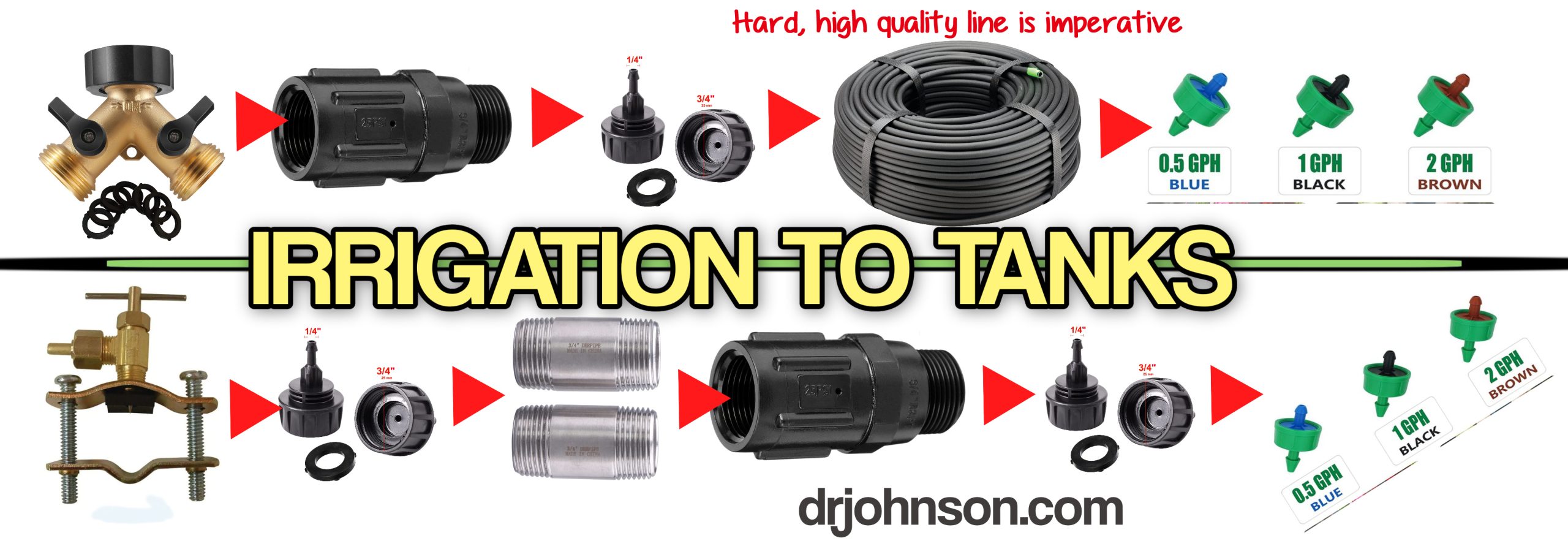
I prefer to run (ceiling-thread, or bury) a black or clear, 1/4 inch irrigation line off a hose bib splitter, with brass adjustable valve at the end, out to the pond to run CONTINUOUSLY.
Items needed:
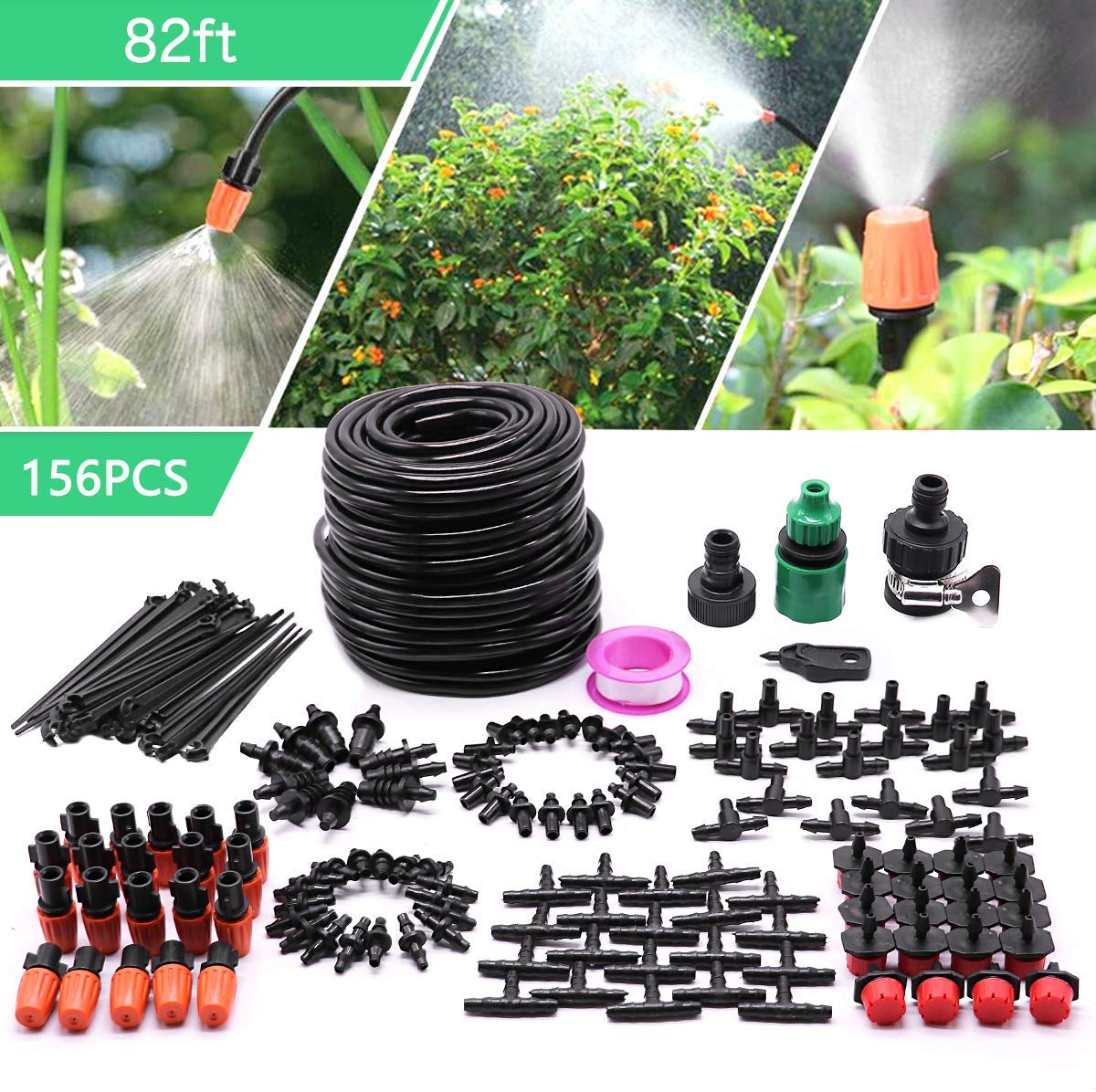
All items are available at most large hardware stores. Home Depot sells a roll of 100 foot of 1/4″ irrigation line and all the appropriate unions, fittings and valves, the total cost to do a whole fish room is about $100. For the normal pond, probably closer to $50. To make measurements simple, try and have ONE feedline and terminating feedline-valve to adjust, instead of several.
SHOPPING LIST:
Basically you go into Home Depot and say “Where is your ‘drip irrigation’ supplies area? And they will indicate almost a whole aisle dedicated to this. It’s so easy to install….Or Amazon has the kit at left.
Spool of “X” number of feet of 1/4 inch icemaker / irrigation line. Black or clear. I like black because it inhibits algae growth inside.
Brass 1/4 inch hose-to-line adapter.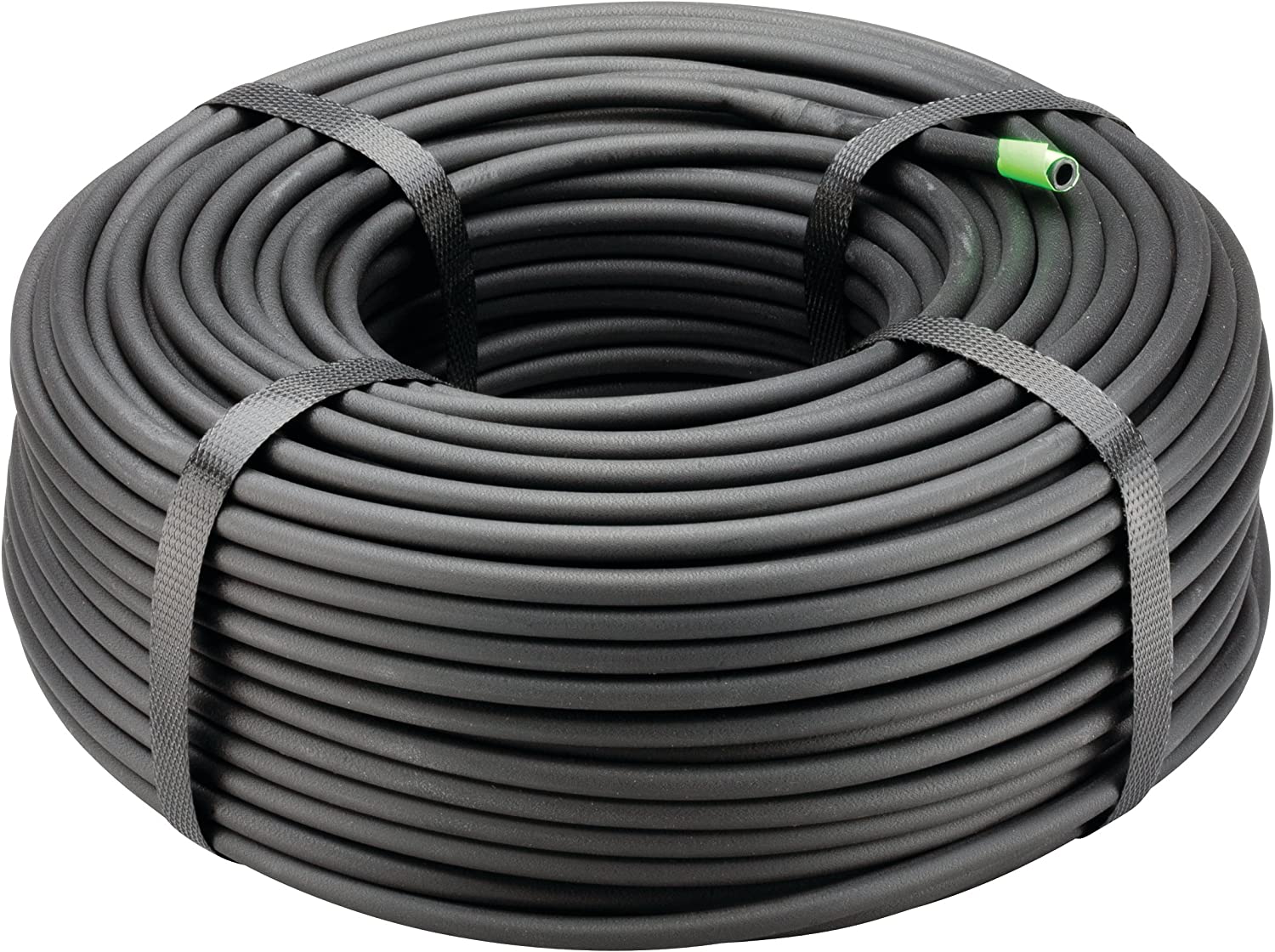
1/4 inch adjustable-valve (the cool thing about using 1/4 inch line and valves is that even “wide open” you probably cannot open it enough to cause chlorine damage or overflow damage to the fish or pond…
1/4 union or coupler (to cut out leaks if they occur.)
5 gallon bucket (optional)
Glass or plastic graduated 1+ liter container to measure water flow. (Necessary)
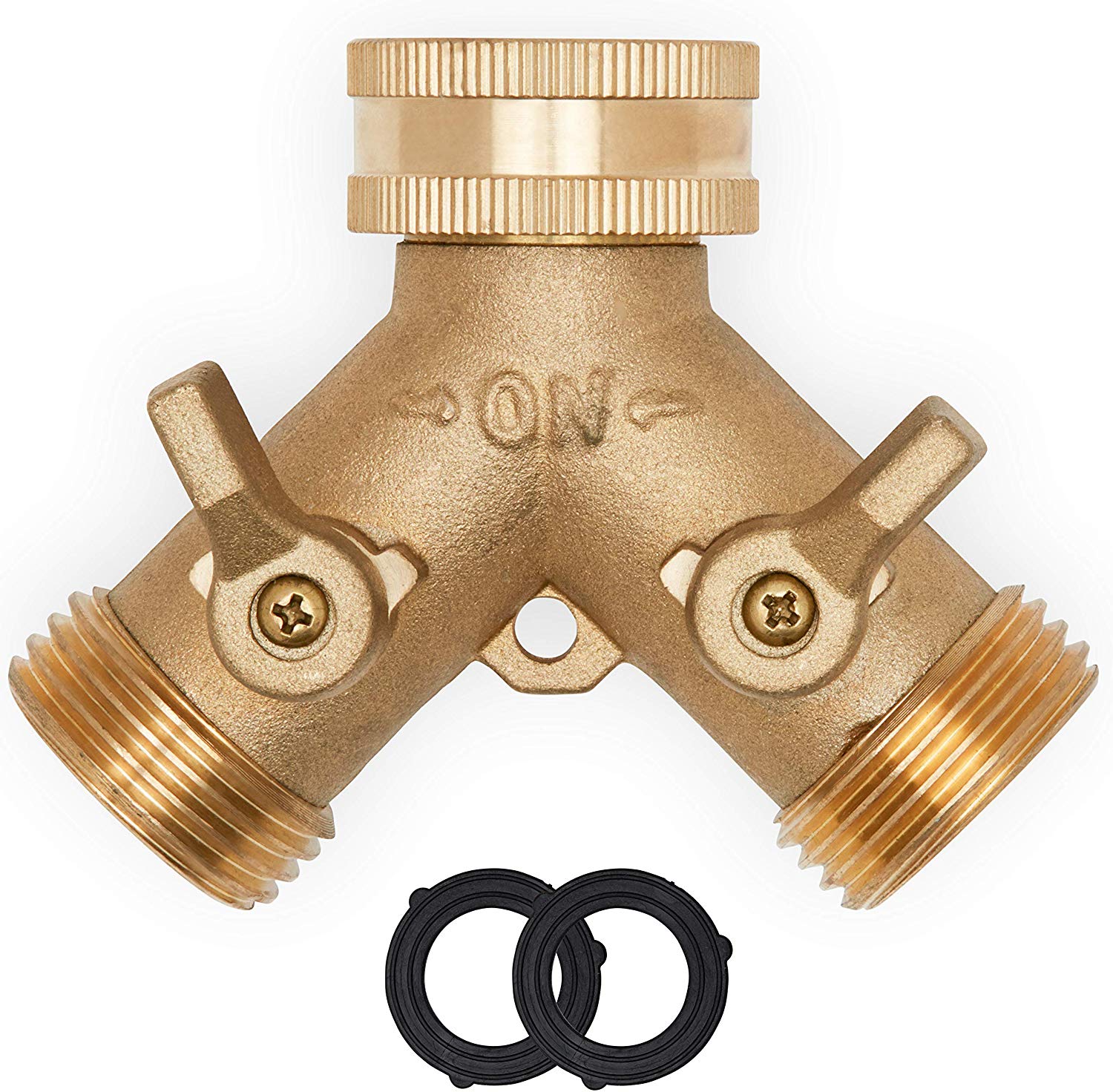 Apply the hosebib splitter to the hosebib nearest the pond. This leaves one hosebib for your wife to garden with. Close hers unless she’s using it. Attach your ‘hosebib-to-1/4-inch-line-adapter’, this adapter you just attached is for your fill line and should be left wide open. Put a small sign on the hosebib that the main hosebib *and* your irrigation line “half” of the hosebib splitter should be left open….run 1/4 inch line to the pond. Attach the 1/4 inch valve. Affix that valve to the waterline somehow so it doesn’t plop out and irrigate the floor or lawn. Bury your line if possible. If you knick or pop the line you can cut out the leaking-piece and splice in a new piece with the brass unions which are simple.
Apply the hosebib splitter to the hosebib nearest the pond. This leaves one hosebib for your wife to garden with. Close hers unless she’s using it. Attach your ‘hosebib-to-1/4-inch-line-adapter’, this adapter you just attached is for your fill line and should be left wide open. Put a small sign on the hosebib that the main hosebib *and* your irrigation line “half” of the hosebib splitter should be left open….run 1/4 inch line to the pond. Attach the 1/4 inch valve. Affix that valve to the waterline somehow so it doesn’t plop out and irrigate the floor or lawn. Bury your line if possible. If you knick or pop the line you can cut out the leaking-piece and splice in a new piece with the brass unions which are simple.
Do NOT run constant hosebib pressure on the 1/4 irrigation line with the irrigation line valve CLOSED …or the line MAY eventually expand and burst. I’ve never seen this, but it happened ONE TIME at Pike’s Nursery where we’ve been using this technology on their fish for sale.
To calculate the maximum hose volume. (Optional)
Run the hose “wide open” and fill a five gallon bucket. Time the process to the second.
If the bucket fills in 45 seconds.
That’s 5 gallons in 45 seconds, which calculates out to one gallon in nine seconds.
That means, wide open, your hose system can generate 400 gallons per hour, since there are 3,600 seconds in an hour.
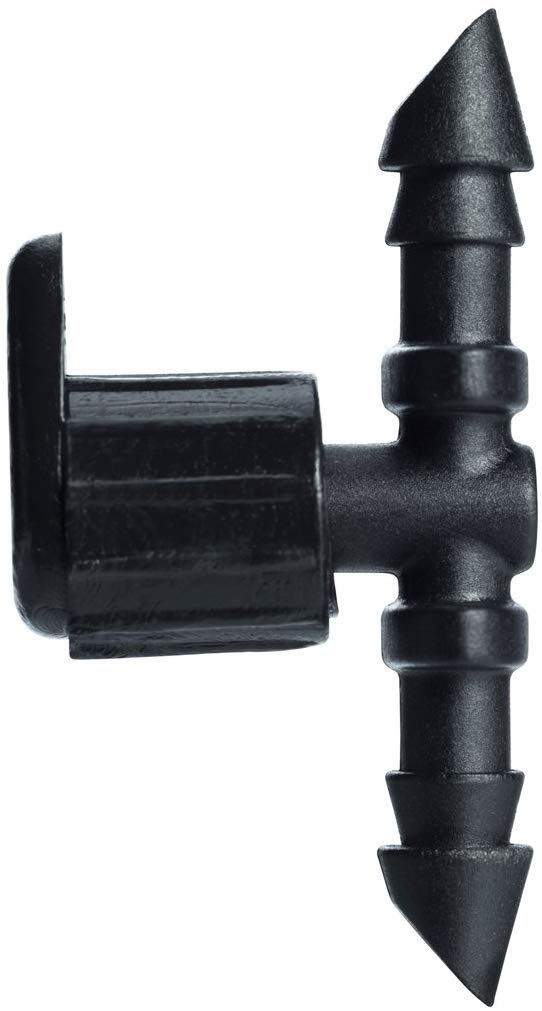
To calculate the irrigation system flow volume:
Run the irrigation line into your graduated container and adjust the brass valve down until the flow is appropriate for the chart below.
Make a simple conversion, and run thusly:
Look how simple these calculations are:
If the pond is 3500 gallons = Drop the decimal point back a tenth, to convert to a “maximum non-dechlorinated flow rate” of 350 milliliters per minute and use the following chart:
[Remember there are 10,080 minutes per week.]
For 3,500 Gallons:
Flow 350 ml-per-minute constantly during DISEASE or medication application = 25% per week.
Flow 175 ml-per-minute during the heat of summer and HEAVY feeding or stocking = 12.5% per week replacement.
Flow 90 ml-per-minute for MODERATE loading and feeding and during fish health. = 6.5% per week.
Flow 45 ml-per-minute for WINTER. = 3% per week.
Let’s do a smaller example:
The pond is 1600 gallons.
160 milliters per minute is 25% per week replacement – good for disease times.
80 ml per minute is 12.5% per week replacement. – good for peak summer loading
40 ml per minute is 6.25% per week replacement. – good for moderate summer loading
20 ml per minute is a measly 3% per week replacement. – good replacement for wintertime.
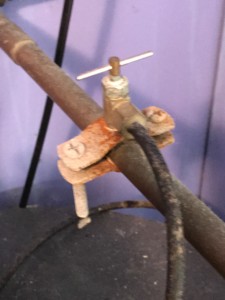
It pays to use a couple rubberbands to hold the terminating 1/4 inch valve on its setting, lest it open or close more. Also, with a brass fitting immersed in the water, these fittings turn brown, which is okay, chemically and for the fish. If you use a small wrench and tighten the lock nut on the valve, the nut under the adjustment stem, you can stiffen it up, but this also happens over time as the valve ages. As it stiffens, it’s harder to adjust up or down, which is a Good Thing from the standpoint of “accidental adjustments” on smaller systems. If you use an emitter – you have to figure out what to do with 12 gallons of water a day. Which might be just perfect.
Never eyeball the adjustment of the valve on a small system.
For example, on a 160 gallon tank, you can do 16 milliliters per minute and that replaces 25% per week with no dechlor needed. Buu-u-u-ut you can see that if the valve gets knocked open a little, you might change MUCH more water too quickly and then get into chlorine issues…..The consolation is that through a 1/4 inch line, even knocked wide open – MASSIVE water flow just isn’t really feasible. But in a half whiskey barrel facility, such an accident with chlorinated water would be enough to do some damage.
By running “new” water to the system all the time, you not only replace evaporative losses but you add new buffers, and replace accumulating DOC with healthy fresh water. You eliminate the need for dechlorinator except when you are forced by rare emergency to change a LOT of water at once. And you give the home owner a chance to relax and never drag around a drain pump, and have to stand by while refilling the pond.
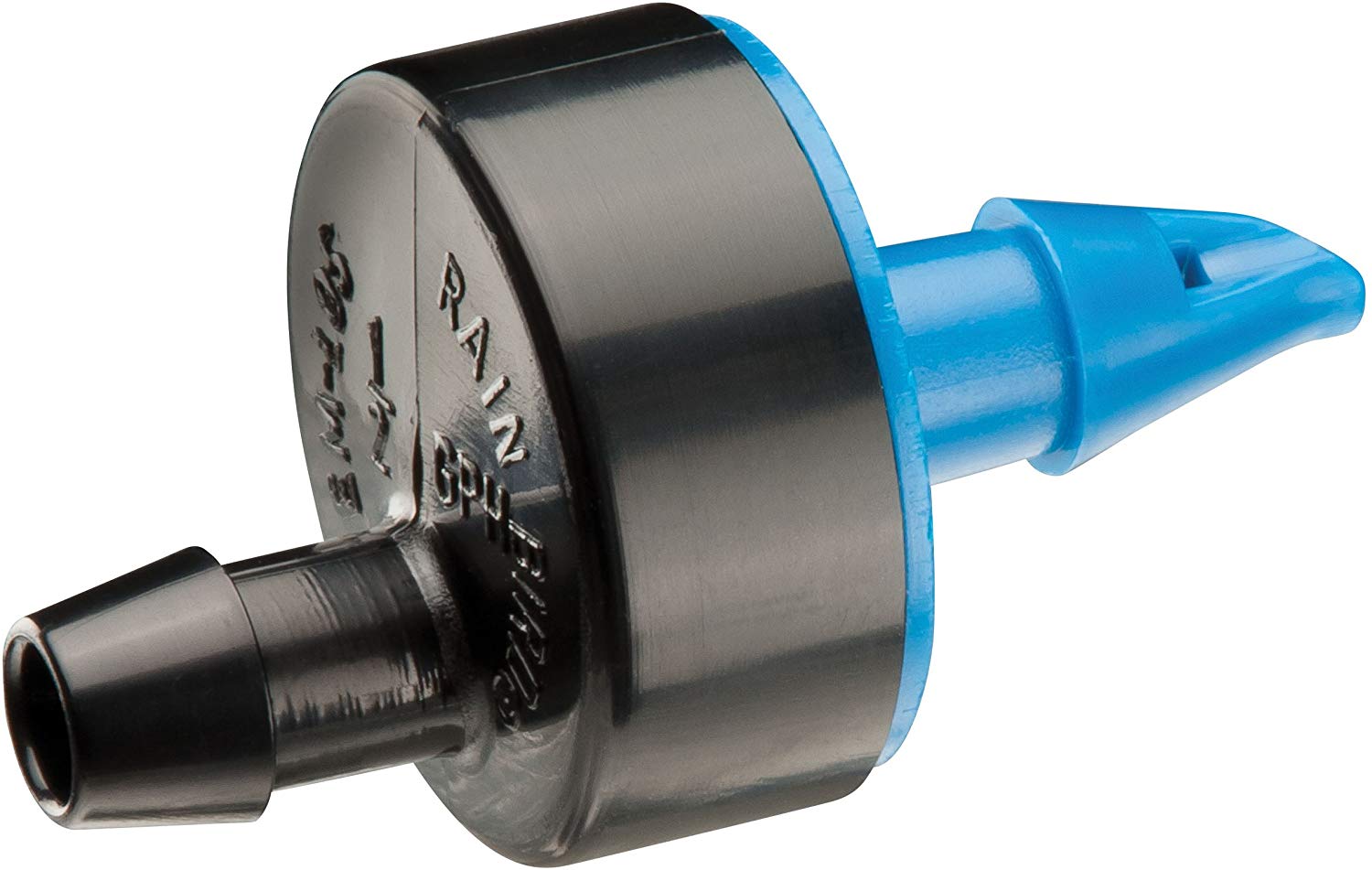
No matter where the owner is, or what they’re doing, they have the satisfaction of know that at the house, they’re always doing a water change and it’s painless.






